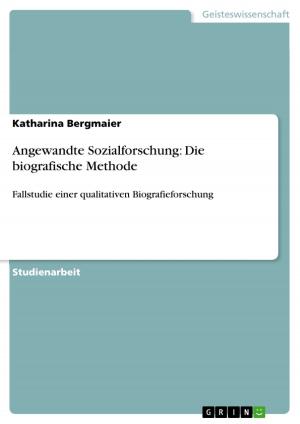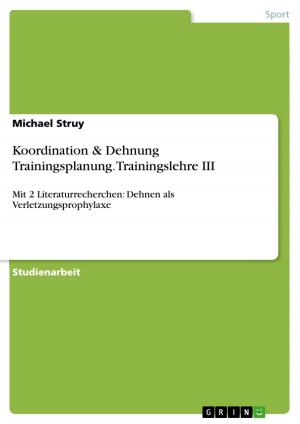| Author: | Saskia Jarick | ISBN: | 9783640956227 |
| Publisher: | GRIN Verlag | Publication: | July 12, 2011 |
| Imprint: | GRIN Verlag | Language: | English |
| Author: | Saskia Jarick |
| ISBN: | 9783640956227 |
| Publisher: | GRIN Verlag |
| Publication: | July 12, 2011 |
| Imprint: | GRIN Verlag |
| Language: | English |
Seminar paper from the year 2011 in the subject Business economics - Accounting and Taxes, grade: 1.3, University of Mannheim, language: English, abstract: Each year, firms disclose information that is analyzed and eventually reflected in the market price. Sources of information are for example annual reports, earnings announcements and press releases. In the past, financial accounting research focused primarily on the numerical financial information disclosed (cf. Hales et al. 2011, 224).1 Interestingly, research showed that asset price movements could only partly be explained by this quantitative information and thus must have additional influencing factors (cf. Demers/Vega 2010, 2). Since corporate disclosure generally consists only to a small fraction of qualitative data and dominantly of textual information (cf. Li 2011, 1)2, and since language is the natural medium through which people communicate, financial accounting research started to focus on the analysis of textual disclosure (cf. Hales et al. 2011, 224). Results of these studies show that different aspects of textual disclosure, like the tone (how information is written/expressed) or the readability can influence for example market prices or analyst behavior (e.g. Li 2010 or Tetlock/Saar-Tsechansky/Macskassy 2008). This paper focuses on research in the field of tone as important characteristic of corporate textual disclosure. Its aim is to provide an overview about the most recent approaches and about challenges that researchers face. The remainder of this paper proceeds as follows. In section 2 the importance of textual analysis and the information content of textual information are discussed. Furthermore this section provides an overview about different approaches to characterize textual disclosure and a tabular classification of the recent literature. Since this paper focuses on the tone of textual disclosure, different approaches to measure tone are discussed as well. In section 3 two recent studies are discussed and section 4 concludes with a summary of the main results of this paper and gives suggestions for future research.
Seminar paper from the year 2011 in the subject Business economics - Accounting and Taxes, grade: 1.3, University of Mannheim, language: English, abstract: Each year, firms disclose information that is analyzed and eventually reflected in the market price. Sources of information are for example annual reports, earnings announcements and press releases. In the past, financial accounting research focused primarily on the numerical financial information disclosed (cf. Hales et al. 2011, 224).1 Interestingly, research showed that asset price movements could only partly be explained by this quantitative information and thus must have additional influencing factors (cf. Demers/Vega 2010, 2). Since corporate disclosure generally consists only to a small fraction of qualitative data and dominantly of textual information (cf. Li 2011, 1)2, and since language is the natural medium through which people communicate, financial accounting research started to focus on the analysis of textual disclosure (cf. Hales et al. 2011, 224). Results of these studies show that different aspects of textual disclosure, like the tone (how information is written/expressed) or the readability can influence for example market prices or analyst behavior (e.g. Li 2010 or Tetlock/Saar-Tsechansky/Macskassy 2008). This paper focuses on research in the field of tone as important characteristic of corporate textual disclosure. Its aim is to provide an overview about the most recent approaches and about challenges that researchers face. The remainder of this paper proceeds as follows. In section 2 the importance of textual analysis and the information content of textual information are discussed. Furthermore this section provides an overview about different approaches to characterize textual disclosure and a tabular classification of the recent literature. Since this paper focuses on the tone of textual disclosure, different approaches to measure tone are discussed as well. In section 3 two recent studies are discussed and section 4 concludes with a summary of the main results of this paper and gives suggestions for future research.















